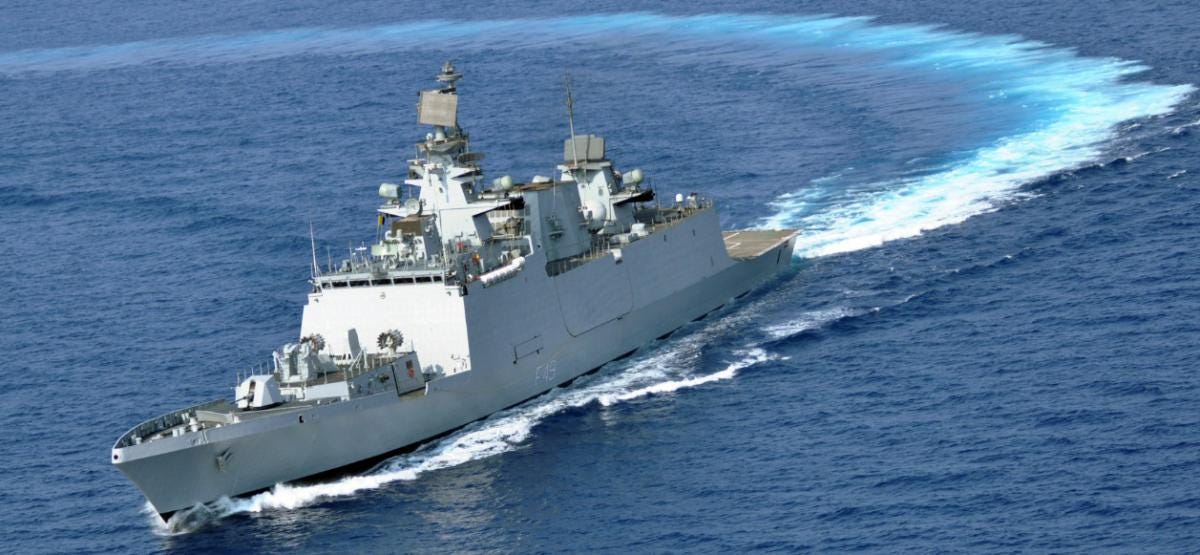 What is going on along the India-Bhutan-Sikkim tri-junction? In the past few weeks, Chinese troops attempted to build a road in the Doklam area in territory claimed by Bhutan. Bhutanese troops challenged the Chinese, but were outnumbered and hence had to withdraw. Bhutanese and Indian armed forces work very closely, so Indian troops entered the scene and ‘persuaded’ their Chinese counterparts to stop building the road and step back a bit. [See Devirupa Mitra’s reports here and here]
What is going on along the India-Bhutan-Sikkim tri-junction? In the past few weeks, Chinese troops attempted to build a road in the Doklam area in territory claimed by Bhutan. Bhutanese troops challenged the Chinese, but were outnumbered and hence had to withdraw. Bhutanese and Indian armed forces work very closely, so Indian troops entered the scene and ‘persuaded’ their Chinese counterparts to stop building the road and step back a bit. [See Devirupa Mitra’s reports here and here]
There the situation stands, with Indian and Chinese troops using banners and loudspeakers to stake out their positions. No shots have been fired so far. The Chinese foreign ministry and PLA spokespersons have gone on the offensive; as has the Indian media. In contrast, India’s external affairs ministry has taken a sober but firm position: emphasising China’s violation of agreements with India and Bhutan, to not unilaterally change the status quo in disputed areas.
From a purely military strategic standpoint, allowing China to get closer to Siliguri incrementally weakens India’s defences in the region, by raising the vulnerability to the “Chicken’s Neck” (a graphic but unfortunate term) connecting India’s north-eastern states. Occupying high ground in the area also allows Indian troops to dominate the bit of Chinese-held territory separating India and Bhutan. So there are good military reasons to hold the ground, literally, in the Doklam area.
More broadly, China’s recent strategy has been to ‘peacefully’ resolve disputes in its favour by leveraging its neighbours’ reluctance to allow incidents to escalate into outright conflict. Beijing first makes an extravagant claim — like the nine-dashed line in the South China Sea, or the map of tri-junction it released yesterday. Neighbours seek to use bilateral diplomacy, multilateral forums and international law to negotiate with China. This is time-consuming and China ensures that it becomes even more time-consuming. In the meantime, it builds islands, roads, runways and military bases in the disputed areas. The only way this can be stopped is through the use of force, but which of its smaller, less powerful neighbours wants to start a shooting war with China? Before long, China has changed the status quo and is in physical control of the once-disputed territory. Occupation is nine-tenth’s ownership.
The developments along the India-Bhutan-China trijunction fit this pattern. Left unchallenged, China will repeat the trick in place after place. Game theorists call this salami slicing. As Brahma Chellaney writes India might have already lost hundreds of square-kilometres of territory in this manner.
How should India tackle this problem? The dominant view in New Delhi is that of a continental power: that we should strengthen our Himalayan defences by deploying the army in greater strength. I disagree with this approach. It comes with unnecessary, undesirable and avoidable risks of getting into a direct military conflict with China. We should not be thinking of fighting wars on our borders.
My view is that India should respond to Chinese moves in the Himalayas and the subcontinent with counter-moves in the South China Sea and beyond. For over a decade, I have argued that India should project power in the waters east of Singapore to deter Beijing from moving in the Himalayan frontiers or among India’s immediate neighbours. For almost a decade, the small and medium powers in East Asia wanted a stronger Indian role to help them balance China. That didn’t happen fast enough, causing many of them to jump onto the Chinese bandwagon. But there are important holdouts: Viet Nam, Singapore, South Korea, Australia perhaps, and most importantly, Japan.
For instance, New Delhi’s response to the face-off at Doklam could be a signal that it would participate in joint freedom-of-navigation operations in the South China Sea. That is likely to cause concern in Beijing. In other words, by using sea power, India could raise the costs of Beijing’s Himalayan enterprises.
In contrast, using land power means responding in a manner China wants us to. Beijing would like India to be preoccupied with defending remote Himalayan peaks and plateaus, locking down large amounts of manpower and money, raising risk of war and attendant tensions. That’s probably why Beijing sought to test its new tank in Tibet. Whether it is used in battle or not, if it causes India to ramp up its land defences, it would serve China well. New Delhi should not end up doing what Beijing wants it to.
Afterword: The timing of Beijing’s provocations is quite likely designed to punish India for boycotting the Belt & Road Summit. In any event, becoming a member of the China-led Shanghai Cooperation Agreement didn’t deter Beijing from taking a hard line on territorial disputes. Why doesn’t that surprise me?
No comments:
Post a Comment